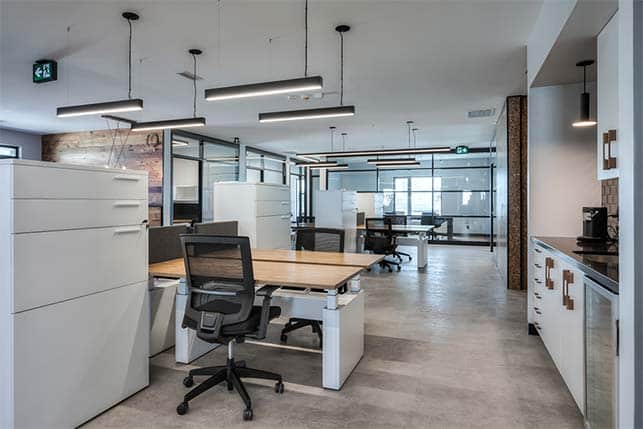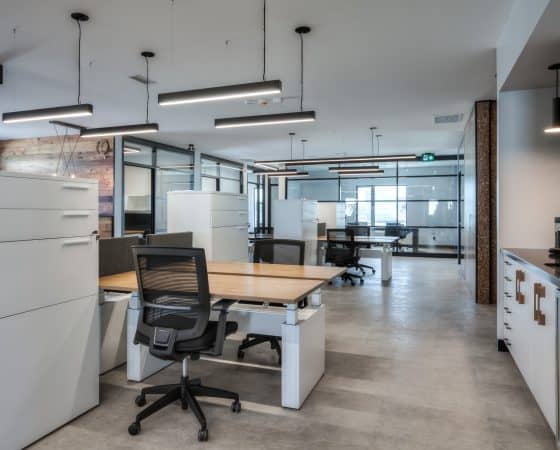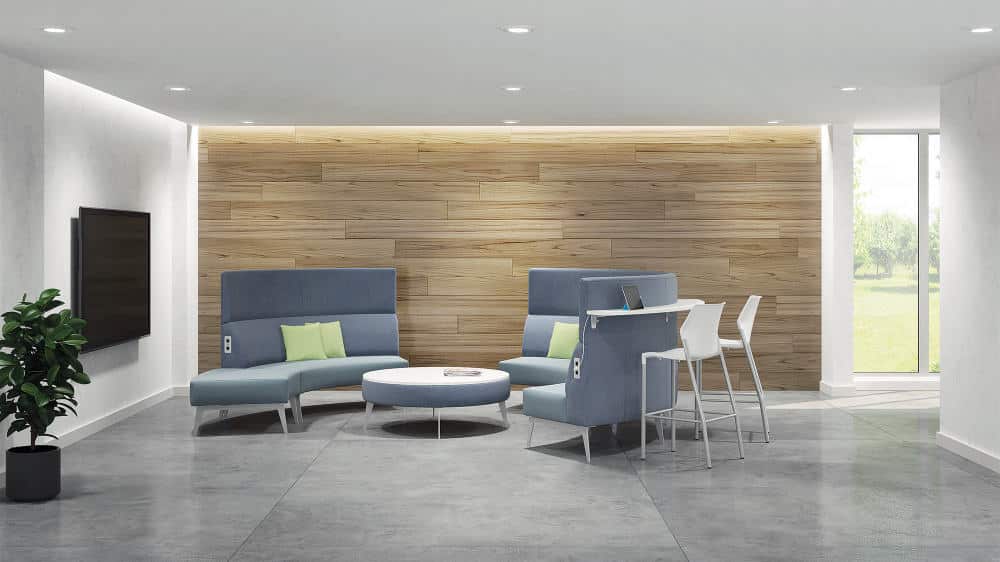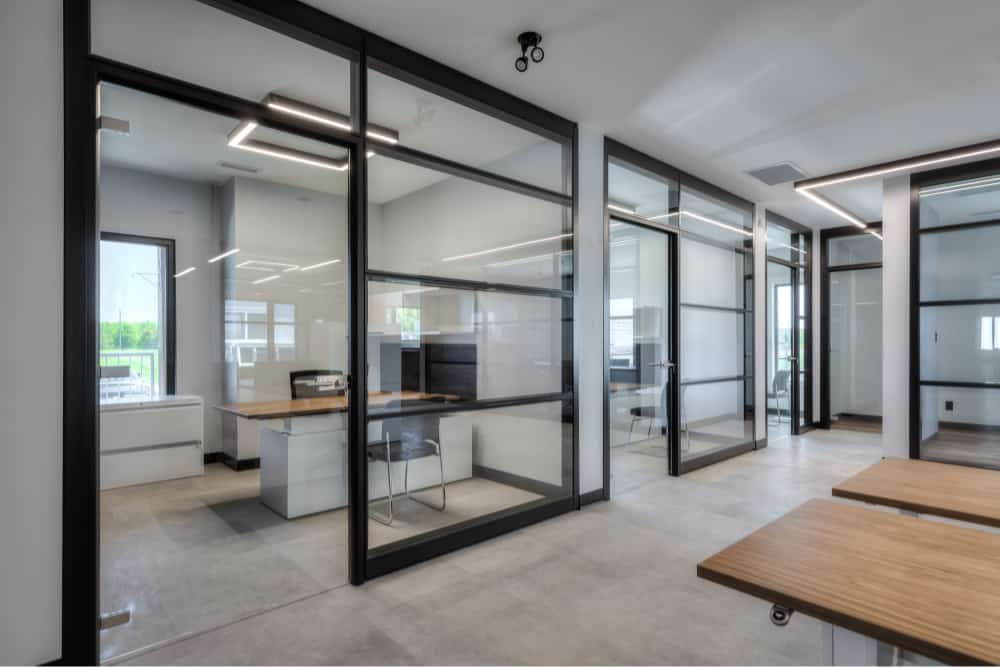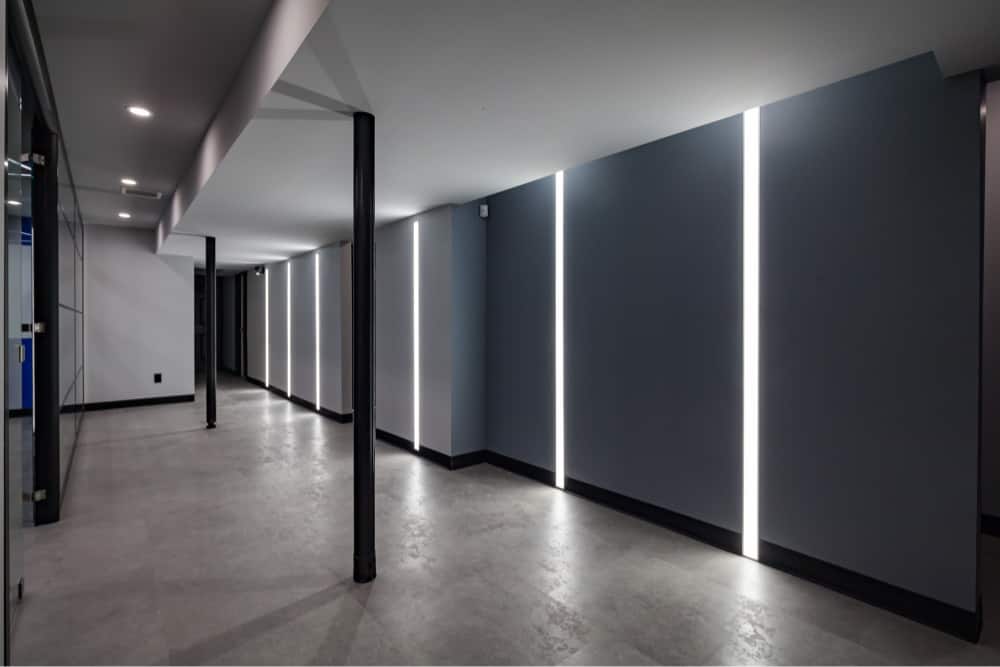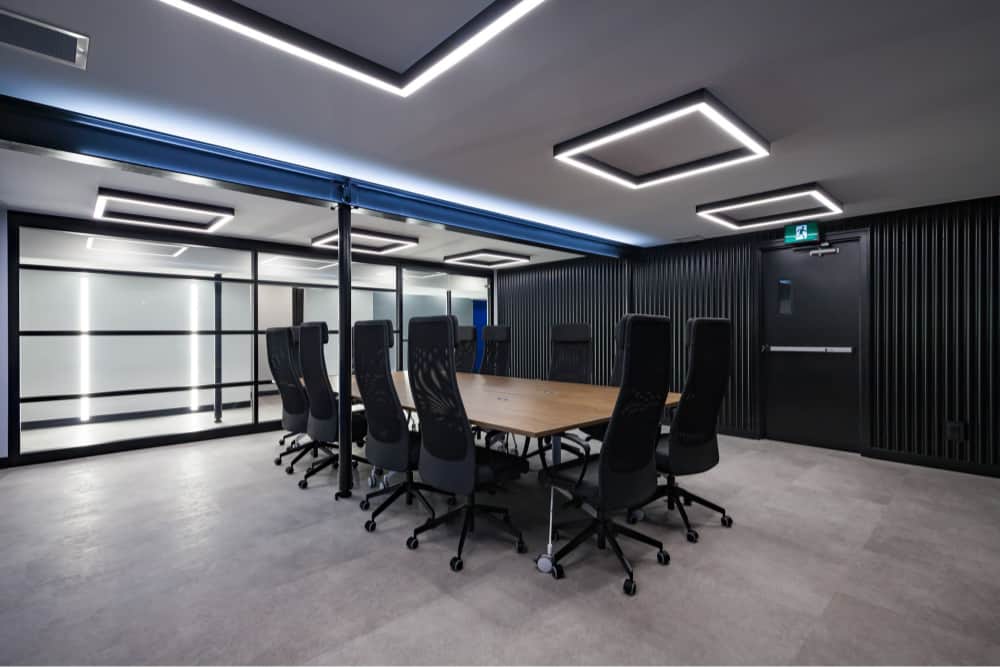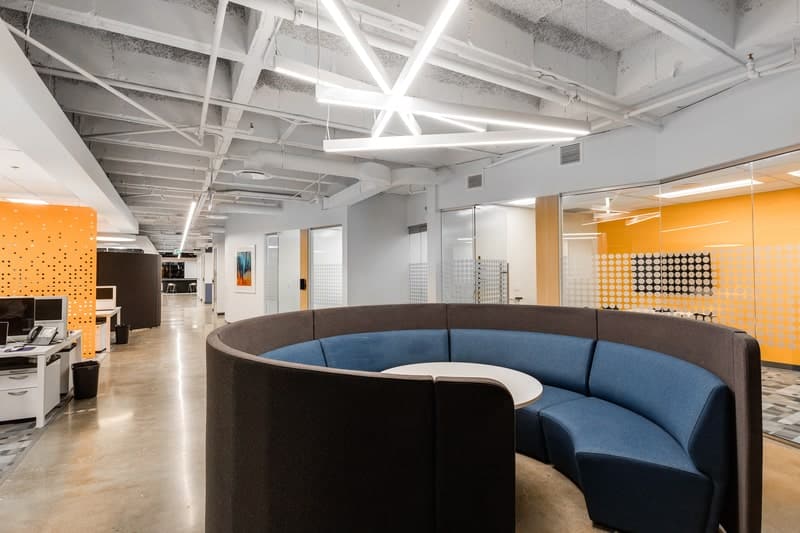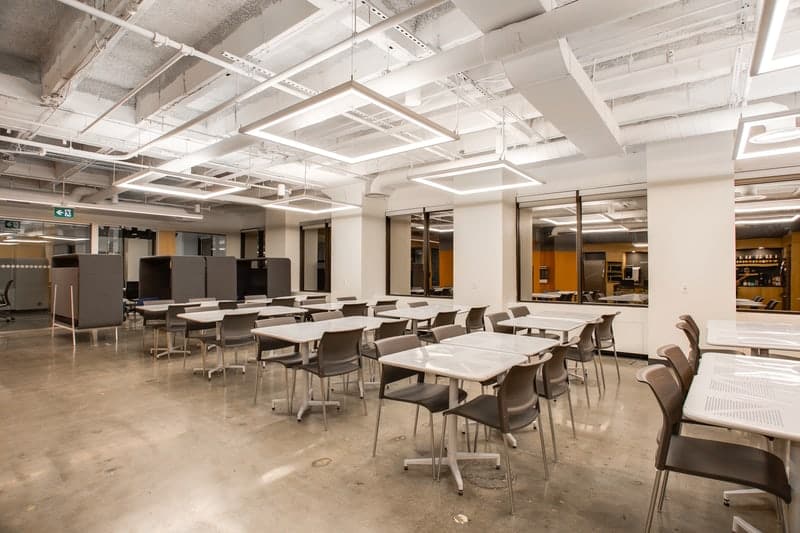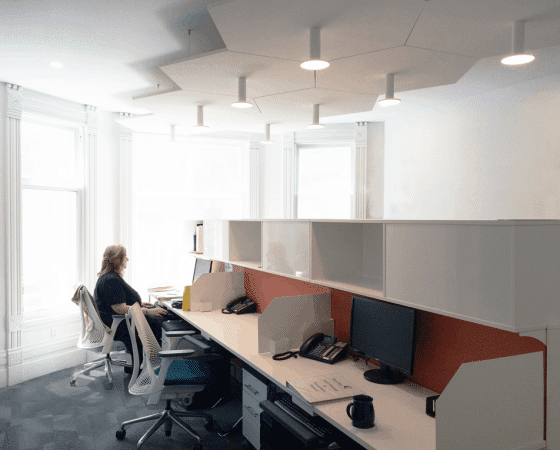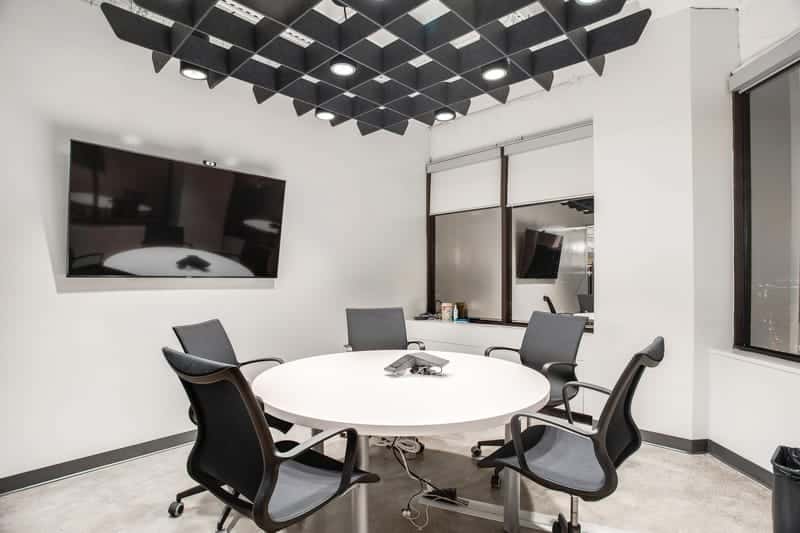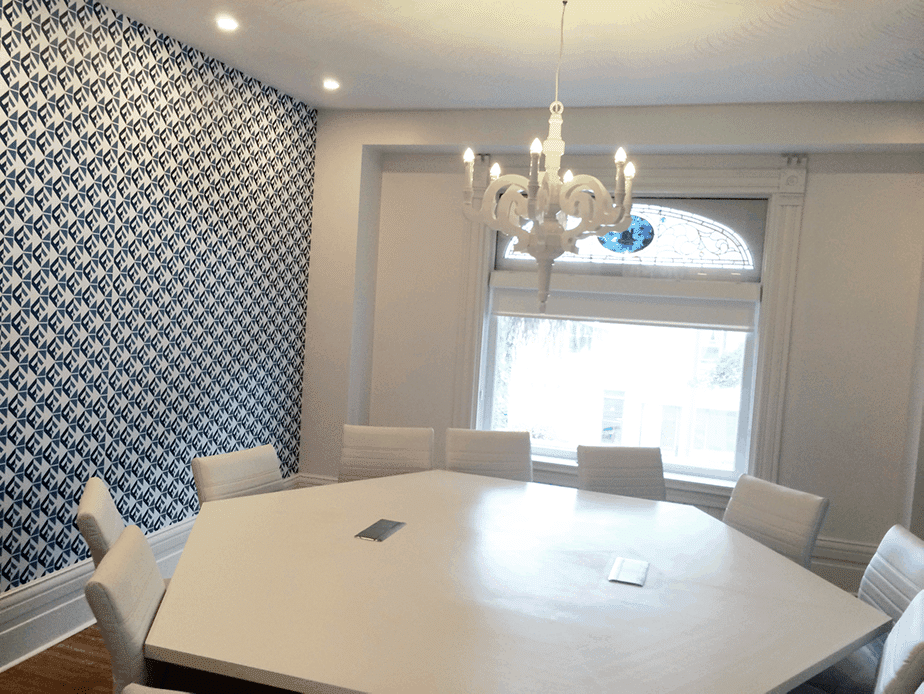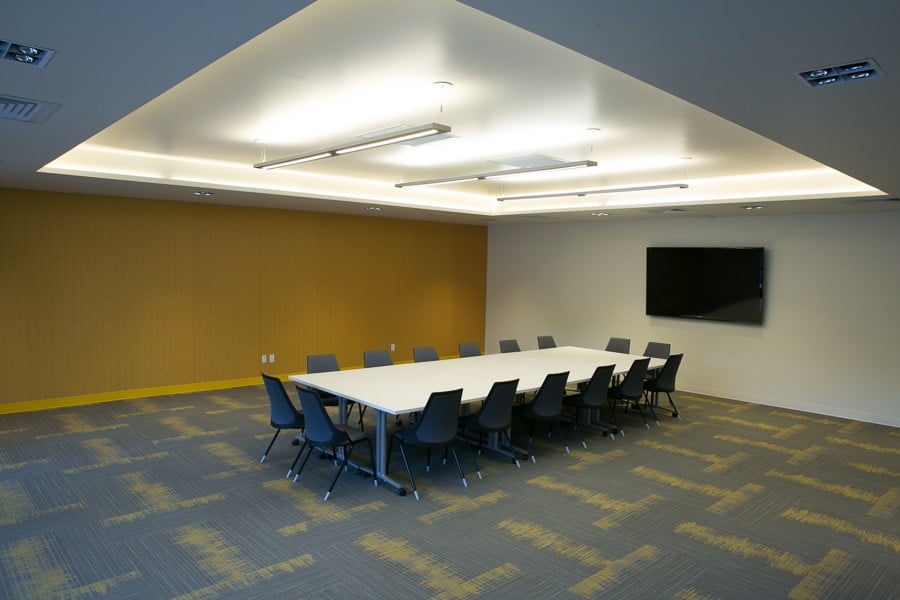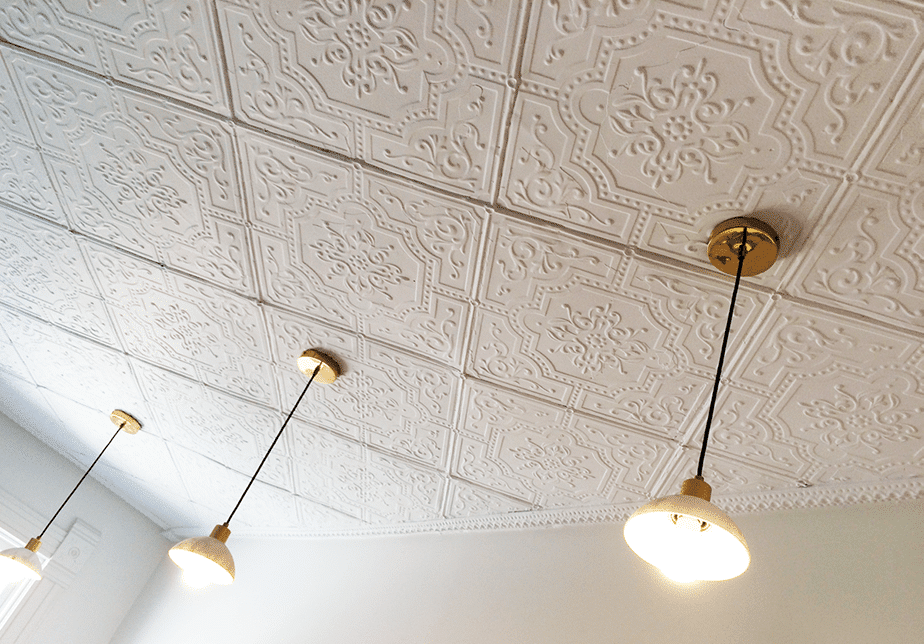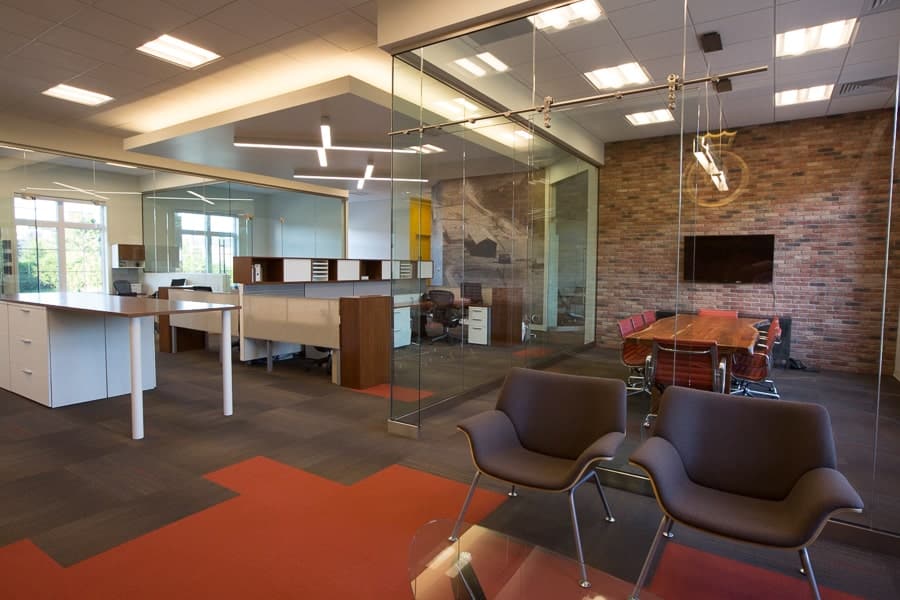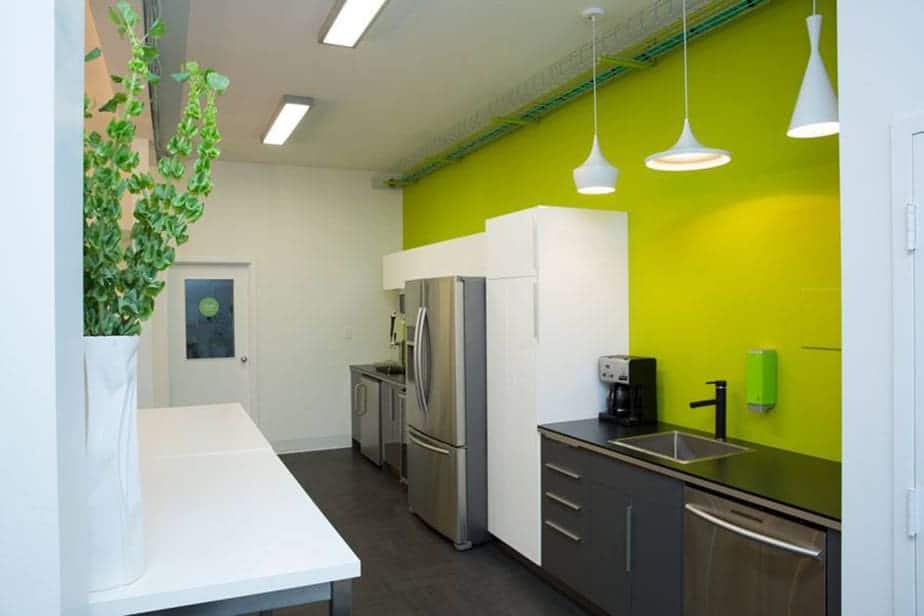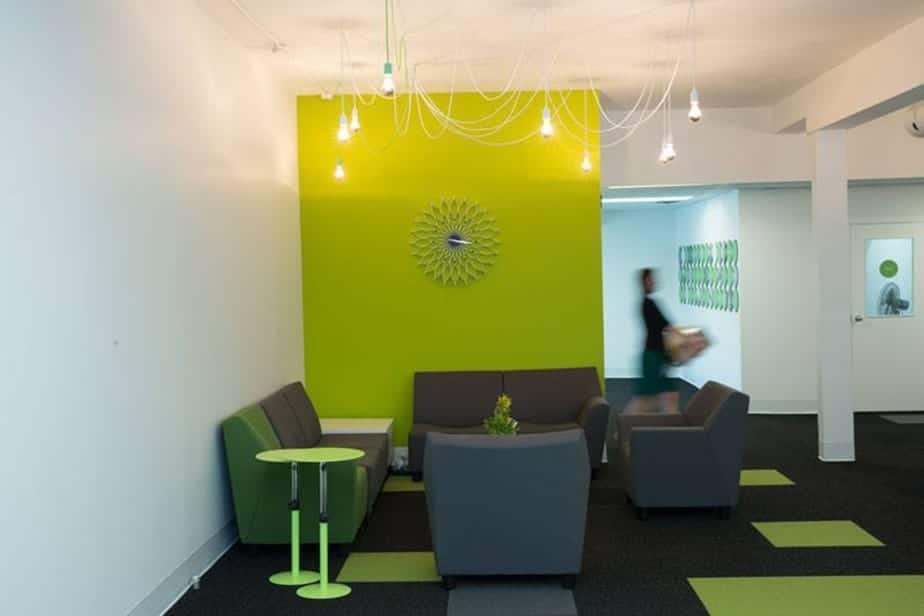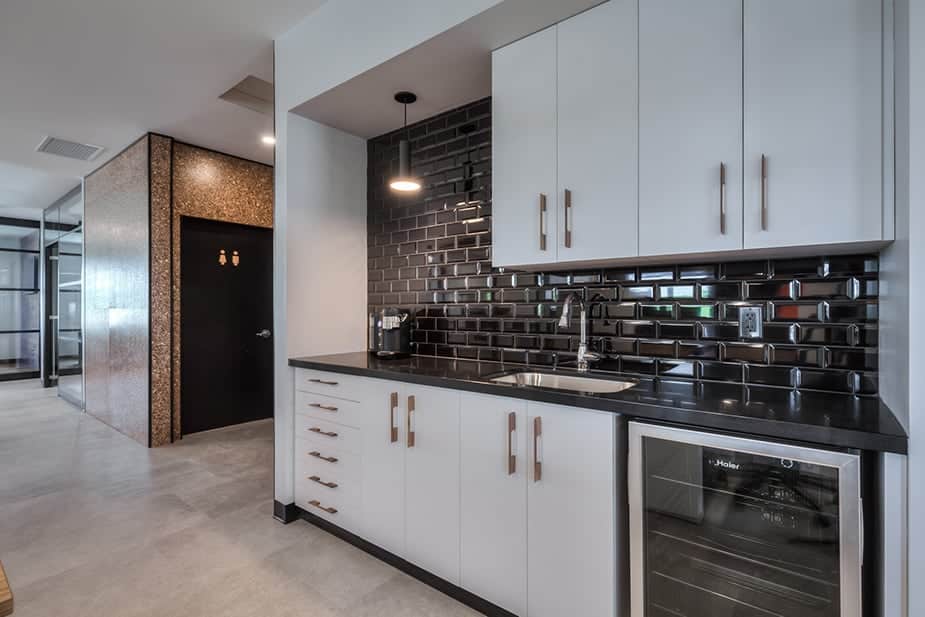In our last article, “The top 6 must-haves for your office space” we listed lighting as the first, most important must-have for an office space. Without proper lighting, many ocular issues and even health problems can occur. It is critical that lighting be well thought through and considered in each space or area.
Poor lighting can be defined as:
- Insufficient light – not enough light for the need, makes productivity inefficient.
- Glare – too much light for the need, creates headaches, body aches and loss of productivity.
- Improper contrast – when you are required to squint for any task for any length, it is unhealthy and can cause long term problems.
- Poorly distributed light – shadows can be a safety hazard, and just feels unsafe.
- Flicker – Flickering might cause anxiety in people. You combine that with a fluorescent fixture and you will have a headache and stress sooner then you can get a second cup of coffee.
We can probably all identify poor lighting, but what does good lighting look like?
A properly lit office space (or any space for that matter) will have layered lighting. This means it will have many different types of lighting throughout the space, specifically designed and structured for the task at hand.
The three main types of lighting include:
Overhead lighting – This will provide overall general lighting. This is meant to light up the space so that everyone can see without harm and create an overall pleasant feel.
Task – Task lighting is more specific to the task at hand. If you are at a desk, perhaps there is a desk lamp or pendants overhanging to provide an extra layer of lighting at your workstation.
Ambiance – Ambiance lighting can work as a two-fold solution. You can create really dramatic and exciting effects that really infuse that brand and culture into the space. It also helps with late night working when your eyes would be to strained to have all the lighting on.
When you are choosing your lighting, many criteria have to be considered in order to make sure that it is the correct lighting for that space and that task.
Items to consider when sourcing lighting:
- Is there any natural light that will need to be considered?
- What is the size and shape of the room?
- What colour is the room?
- How tall are the ceilings?
- What are the materials of the room? Will there be glare of reflections?
- What are the tasks done in that room?
- Is it a multipurpose room?
What to consider when it comes to choosing the correct luminaire (a complete electric light unit):
- What is the purpose? Is it general, accent, task or decorative?
- Who is the user?
- What role does the luminaire play in the layering of light in the space?
- Is it the focal point or meant to blend or be hidden?
- What is the quality of the product?
- What is the photometric data?
- Is it economical?
- How is it installed?
- What are the lamp characteristics?
- How is it maintained?
- How does it look?
Factors affecting the distribution of light are the shape of the luminaire, its material and finish, the location and size of the opening and the mounting position of the luminaire.
- Direct – at least 90% of the light is directed downward.
- Indirect – at least 90% of the light is directed upward.
- Semi direct – most of the light is directed downward and some of the light is directed upward.
- Semi indirect – most of the light is directed upward and some is directed downward.
- Diffused – distributes illumination in all directions.
When you layer lighting, different styles of luminaires should be considered:
- Suspended Luminaires
- Track Luminaires
- Structural Luminaires
- Cove Lighting
- Cornice Lighting
- Soffit Lighting
- Wall Bracket Lighting
- Furniture Integrated Luminaries
Technical terms that are critical to understand when choosing the correct luminaire:
Kelvin – This is referring to the colour temperature of the lamp (the light bulb). Kelvin indicates the amount of red or blue in the light being supplied. 3000K lamp would be a warm yellow, where a 4500K lamp would be cooler white. Red represents warm and the warmer it is, the lower it is on the scale. Blue represents cooler and the cooler it is, the higher it is on the scale.
CRI – The CRI (Colour Rendering Index) measures how accurately a light source reveals the true colours of an object and is also supplied by the manufacturer. The index ranges from 1 to 100. The higher the CRI, the better the light rendering quality.
Lumens – Lumens measure brightness. A standard 60-watt incandescent lamp, for example, produces about 800 lumens of light. By comparison, a LED lamp produces that same 800 lumens using less than 12 watts.
LED vs. Incandescent
As most of us know, nowadays, there is really only one type of lamp to be purchased, the LED. (Light Emitting Diode). Although we have still met a few clients that are not convinced that this is the best way to go. We have to say that there is no other way to go
Just for quick comparison:
60W Incandescent will have a yearly operating cost of approx. $13.00, energy use is 60W, lumens is 800, kelvin is 3500 and the lamp lifetime is 750 hours.
12W LED will have approx. $2.50 yearly operating cost, energy use is 12W, lumens is 800, kelvin is 3500 and the lamp lifetime is 50,000 hours.
LED lights can be both dimmable and accessible everywhere. However, not all LED’s are created equal, watch out for theCRI (Colour Rendering Index) as that can vary on less expensive lamps which means a poorer quality light.
Be reassured, when you are choosing a proper luminaire that is commercial grade, all of this technical information will be listed on the specification sheet or package. It is critical that your fixture is CSA, cUL or cUL/US approved. This will mean that all of the testing had been passed which will ensure fire safety at your office.
Lighting component of workspace design can be overwhelming and expensive. Therefore, it is crucial to make sure that you know what you need for each individual space so that you are choosing the correct lighting for your office.
If you have any questions about improving your workspace, please do not hesitate to contact us. We are happy to visit your space, make recommendations and suggestions. Looking forward to connecting. design@studioforma.ca

